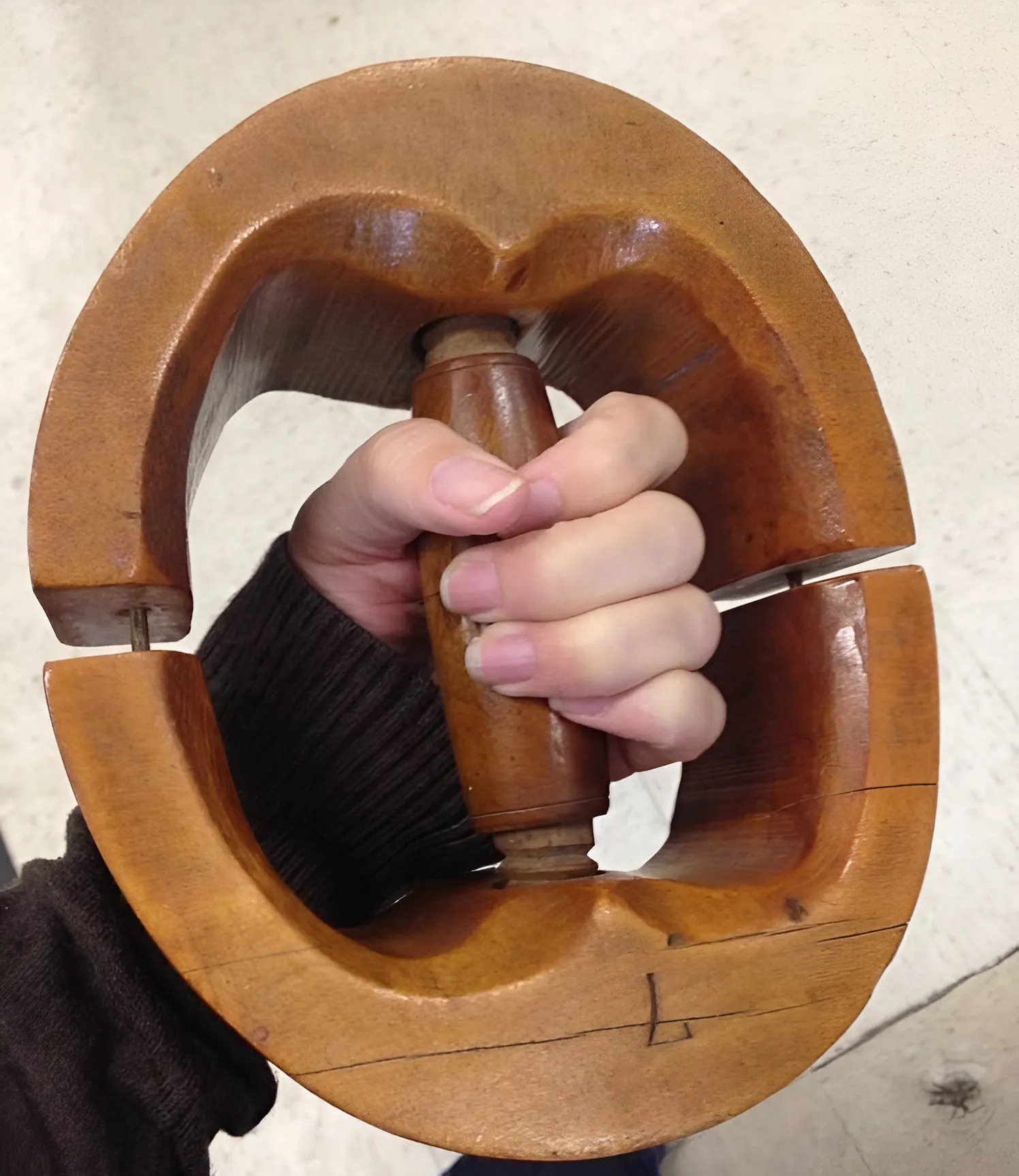I had just moved into an old house and came across this strange wooden thing. At first, I thought it was some sort of ugly dumbbell, but it was light and completely impractical.
When I learned what it actually was, I was stunned. I had no idea people could invent something like that…
I reveal what it is in the first comment
When I first moved into that old house, I knew it was going to be an adventure—full of dust, spider webs, and perhaps some eccentric family relics stashed away in forgotten corners. That’s pretty much what I expected. Maybe I’d find a few weird paintings with crooked frames, some antique furniture that had seen better days, and maybe a couple of mysterious jars of nails or dusty, faded photographs. But I definitely didn’t expect to stumble upon what I did that day, tucked away in the darkness of a storage room crammed with creaky boxes and old, unlabeled jars.
As I cleared away some clutter and pushed aside the cobwebs, my eye caught something unusual in the corner. It looked like a strange, bulky object, leaning against the wall among a jumble of paper, fabric, and a tattered blanket. At first, I thought it was some weird old dumbbell—probably left behind by some former owner’s odd workout obsession. It was hefty-looking but oddly lightweight, with a handle running through the middle, almost like it was a piece of exercise equipment. But the more I peered at it from different angles, the more it struck me as awkward and completely unbalanced. I rolled it between my hands, trying to make sense of its purpose.
Honestly, I was stumped. I tried to imagine how anyone would have used such an odd thing for working out or anything else, but nothing clicked. My mind jumped from one idea to another—maybe it was some sort of bizarre sewing tool? An old clamp? A strange piece of furniture? Nothing seemed to fit, and I found myself just holding it there, puzzled, amused, and a little captivated by how ridiculous the object looked.
Curiosity finally got the better of me. I took out my phone, snapped a picture of the strange wooden item, and posted it online with a simple question: “What on earth is this?” I didn’t expect much of a response, but within minutes, the internet proved to be a surprisingly responsive and insightful place.
The comments flooded in faster than I could keep up. The first reply that caught my eye simply said, “That’s a hat stretcher!” I stared at the image again, reading the explanation eagerly. Apparently, these devices were used long ago to stretch or preserve the shape of hats—especially fancy hats made of fine materials that needed to stay impeccable. A hat stretcher helps maintain the hat’s shape, preventing it from shrinking or warping over time. It’s a tool that most people today have never even heard of, much less seen.
I was fascinated. I’d never really imagined that people had such specialized tools for their headwear. Some of the online commenters even shared pictures of old hats they’d owned that looked like they might have used a similar device. Others described how, in the Victorian era and early 20th century, wealthy gentlemen and fashionable women would go to great lengths to keep their hats perfect, sometimes using detailed wooden frames and stretchers to ensure their headgear looked pristine for every outing.
Honestly, I still have trouble visualizing exactly how it was used day-to-day. Did they slip the hat over it like a mold? Did they leave it in the sun to slowly stretch? Or maybe they used it just for storage, to keep the shape intact while the hat was not in use? I kept staring at the oddly shaped handle, trying to imagine someone carefully placing a delicate silk hat over it, then tightening it slightly to preserve the brim—just enough to keep everything perfect.
Now, this strange wooden object sits on one of my shelves, where I keep a little collection of oddities from the house. It’s a reminder of how the past sometimes sneaks out from dusty corners, surprising us with the weirdest relics and stories we never expected to uncover. I love that it’s not a fancy artifact or a priceless heirloom but something tiny and obscure that still holds a story—about fashion, craftsmanship, and the lengths people went to to look their best.
Every time I glance at it, I think about all the people who once owned it—craftsmen, wealthy hat wearers, or maybe even just a proud owner who wanted to keep their Sunday best looking perfect. That thought makes this odd little wooden piece feel a little more special, more connected to a world long gone but still alive in the dusty corners of an old house. And I can’t help but smile, realizing that sometimes, all it takes is a strange object to remind us how wonderfully unpredictable history can be.







